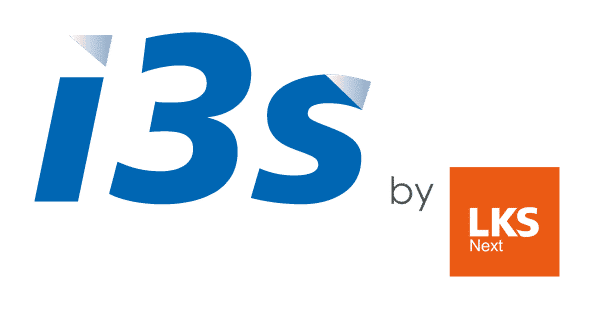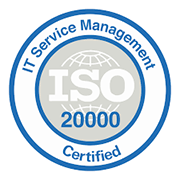Integration
SAP SuccessFactors
with EHSM
Create an environment to inform and train your staff in everything related to prevention and occupational hazards. Efficiently complies with current regulations in Spain and Europe.
The regulatory challenge and training in the area of occupational safety and health
The regulations in force in Spain and Europe establish certain communication obligations in this area, the non-compliance with which entails serious penalties.
Law 31/1995 on Occupational Risk Prevention
Target
This law establishes the basic regulatory framework for the prevention of occupational risks in Spain. Its main objective is to guarantee the safety and health of workers by promoting a preventive culture in companies .
Obligations
Companies are obliged to
inform and train their employees
about the specific occupational risks
to which they are exposed in their
workplace.
Adequate preventive measures must be implemented
to
minimize or eliminate these risks.
Royal Decree 39/1997
Regulatory framework
This decree develops the Law 31/1995, establishing the provisions necessary for the organization and operation of the prevention services in the companies.
Training and sensitization
It establishes that workers must receive adequate training on the risks related to their work and the preventive measures to be adopted. Training must be continuous and adapted to changes in the work environment .
Directive 89/391/EEC
European context
This directive establishes a general framework for the improvement of the safety and health of workers in the European Union.
Preventive measures
Promotes risk assessment and
the adoption of appropriate preventive
measures.
Obliges employers to inform
and train workers on
the risks present in their workplace
and the preventive measures
to be followed.
WEBINAR
Integration of
SAP SuccessFactors with the module of
SAP EHSM
We will discuss the benefits of integrating SAP SuccessFactors with SAP EHSM, with the goal of ensuring regulatory compliance and reinforcing commitment to worker safety and well-being. A step towards excellence in occupational health and safety management.
Why do occupational accidents happen?
Workplace accidents can occur for a variety of reasons and are often the result of a combination of factors. One of the critical aspects contributing to these incidents is the lack of training and information on the risks associated with the job.
Lack of knowledge about risks
Lack of knowledge of procedures: Workers who are not
adequately trained may not know the
safety procedures necessary to perform their tasks
safely. This increases the likelihood of errors that
can result in accidents.
Inadequate hazard identification: Without proper training
, employees may not be able to identify
hazards in their work environment, preventing them from taking
necessary precautions.


Inadequate training in the use of equipment
Incorrect use of tools: Lack of training on the
correct use of tools and equipment can lead to
accidents. Workers who have not received training
may operate machinery in an unsafe manner, increasing the
risk of injury.
Lack of practice: Theoretical training without adequate practice
can result in a lack of skills needed to
handle risky situations on the job.
Deficiencies in risk communication
Incomplete or confusing information: If information about risks and safety measures is not communicated in a clear and accessible manner , employees may not fully understand the hazards associated with their work. Updating protocols: Lack of updated information about changes in safety procedures can lead to workers following outdated practices, which can be dangerous.


Poor safety culture
Disinterest in safety: If the organization does not prioritize
training and communication about safety, employees
may develop a culture of disinterest in safety,
which increases the likelihood of accidents.
Lack of accountability: Without proper training,
workers may not feel responsible for their own
safety and that of their co-workers, which can result in
risky behaviors.
The value of training and information to promote safe working environments
In a business context where occupational health and safety are undisputed priorities, the integration of SAP SuccessFactors (SSFF) with SAP EHSM presents itself as a high-value solution.
This collaboration enables more efficient management of critical information related to prevention and training, ensuring that employees have access to relevant data and are prepared to meet the challenges of the work environment.
Prevention and Medical Information at Employee Central (SSFF)
It is essential to share critical prevention and medical information with employees, such as risks, skills, incidents and PPE deliveries. Thanks to this integration, all this information is centralized in SSFF's Employee Central, ensuring that employees are always informed and protected.
Training plans communicated to SSFF
The integration also facilitates the communication of any necessary training plans from EHSM to Success Factors' Learning Management System. In this way, employees can know in advance what training they will need to take, ensuring that they are always ready and able to meet any challenge.
Why integrate
SuccessFactors with SAP EHSM?

Access to relevant information
Data centralization. With the integration of SSFF and EHSM, all critical information on safety policies, procedures and regulations is centralized on one platform accessible to all employees. This ensures that everyone has access to the information they need to act safely in their work environment.
Constant updates. The platform enables real-time updating of safety-related information, ensuring that employees are always informed about the latest procedures and best practices.
Continuous and adaptive training
Training programs. Integration facilitates the implementation of specific occupational health and safety training programs tailored to the needs of each position. This ensures that each employee receives the necessary training to handle risks specific to his or her area of work. Knowledge assessments. Periodic assessments can be conducted to measure employee knowledge of safety procedures. This not only reinforces training, but also identifies areas that require additional attention.


Promoting a culture of safety
Awareness and accountability. By providing employees with access to information and ongoing training, a culture of responsibility around safety is fostered. Employees become active agents in identifying and mitigating risks. Feedback and continuous improvement. Feedback on safety incidents and practices is integrated into training programs, allowing for continuous adjustments and improvements in workplace safety policies.
Long-Term Benefits
Reduction of accidents. The combination of adequate information and effective training contributes to the reduction of workplace accidents, creating a safer environment for everyone. Improved work climate. A proactive approach to workplace safety not only protects employees, but also improves the work climate, increasing satisfaction and talent retention.

SuccessFactors integration with EHSM
Request information about the service by filling out this form.


